Western Bluebird Nestlings At 5 Days Old all photos by Larry Jordan
House Sparrows, imported from Europe in 1851, multiplied so rapidly in the United States that by the early 1900s they were displacing Bluebirds at an alarming rate by competing for nesting sites. People who loved the very popular bird that "carries the sky on its back and the earth on its breast" were concerned.
Western Bluebird Male
In 1934, Thomas Musselman wrote an article for the National Audubon Society urging the establishment of "bluebird trails" across the United States. Over forty years later, Dr. Lawrence Zeleny wrote the book The Bluebird – How You Can Help Its Fight For Survival which prompted letters from bluebird enthusiasts all over North America. From the efforts of these two men and several others, the North American Bluebird Society (NABS) was born in March of 1978.
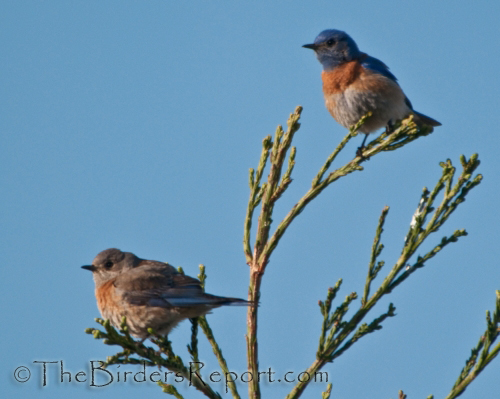
Western Bluebird Pair
The Western Bluebird is not out of the woods yet. They are listed as sensitive in Oregon and Utah, and are a candidate for listing in Washington. They are listed as a species of high concern by New Mexico Partners In Flight and considered "in jeopardy" in California. In British Columbia, the Western Bluebird is proposed for designation as a species of "special concern." This is in stark contrast to the Eastern Bluebird which has had a more successful conservation effort over the past 30 years, in large part due to the establishment of bluebird trails.
Monitoring your birdhouses is also a very important part of the puzzle. The entrance hole for bluebirds should never be over 1 9/16" in diameter. This keeps out the European Starling but not the other non-native species, the House Sparrow.
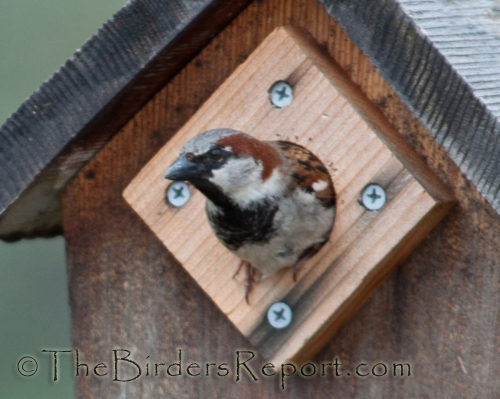
House Sparrow Male
This is the last thing you want to see at your bluebird nest box, a male House Sparrow. I thwarted this intruder by removing the eggs that had been laid in the nest. This tactic has worked for me the only two times I had a House Sparrow problem. To see more about how to combat this threat to the bluebird, visit my friend Bet’s website here. She has the best information on bluebirds on the net.
The North American Bluebird Society is a non-profit education, conservation and research organization that promotes the recovery of bluebirds and other native cavity-nesting bird species in North America. I have had the joy of monitoring three bluebird trails that provide nesting for three other cavity nesting species in my neck of the woods. The Oak Titmouse…
the Tree Swallow…
and the Ash-throated Flycatcher
If you are interested in helping the bluebird’s struggle to survive, join the North American Bluebird Society and if you have the time and habitat, start a bluebird trail. You can help several cavity nesting species in your area by simply putting up birdhouses in your yard and monitoring them.
If you are interested in helping cavity nesting birds in your area or if you have any questions about birdhouses or bluebird trails, please contact me and I will help you get started on this fun and rewarding endeavor.

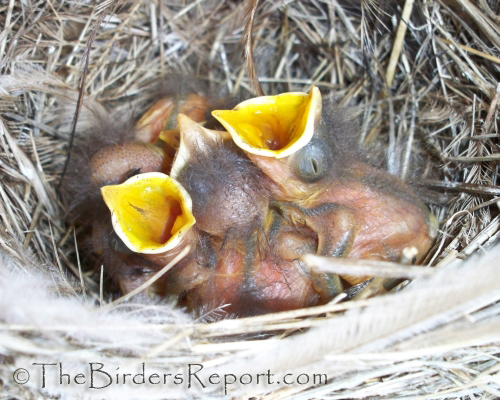
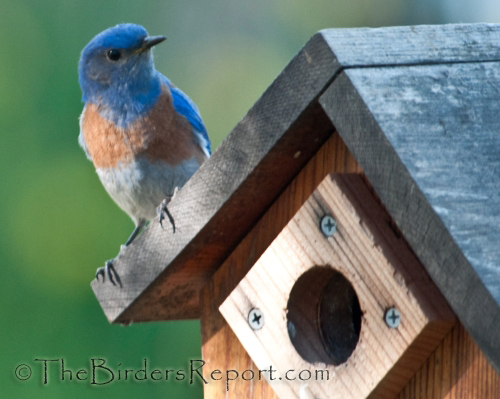
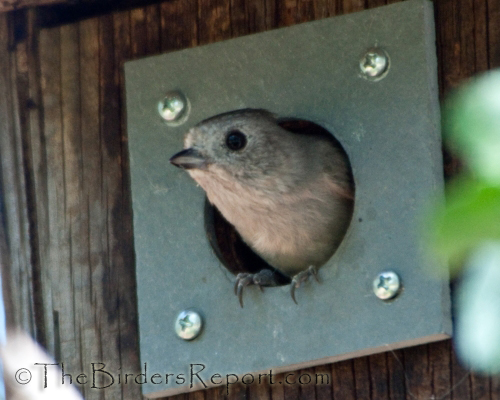
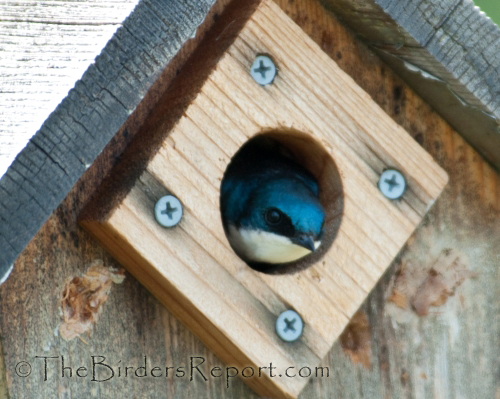
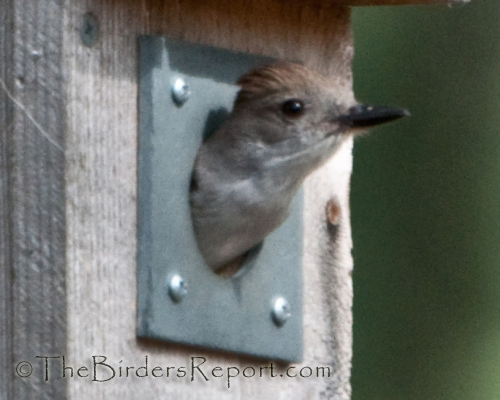








Comments on this entry are closed.
Great shot Larry. Birds are sure amazing. Looks like you are getting some good bird photos. Keep up the good work and keep having fun.
Frank
@Frank I am having a blast! Take my camera everywhere. Maybe someday I will be as good a photographer as you are 🙂 You can see Frank’s photography here.
Its interesting to read that the house sparrow is an unwanted guest to the birdhouses…..here in India, there is collective concern of the slow disappearance of house sparrows in various cities!
.-= Ambika´s last blog ..A new bird in town =-.
@Ambika I received another comment recently that the House Sparrow was declining in the UK also but they are certainly hardy here. The problem is that they have displaced several native cavity nesters in the US, including the bluebird